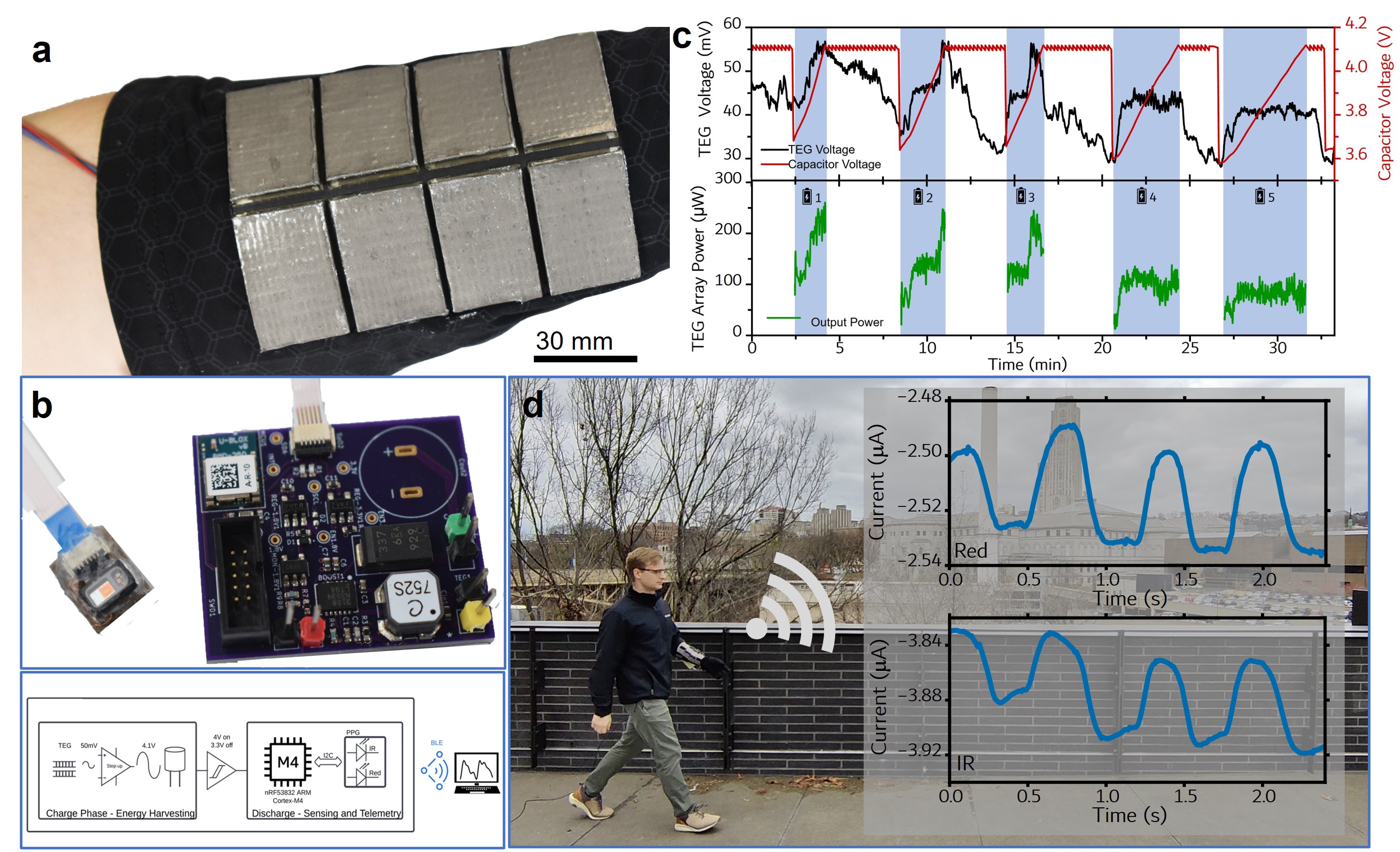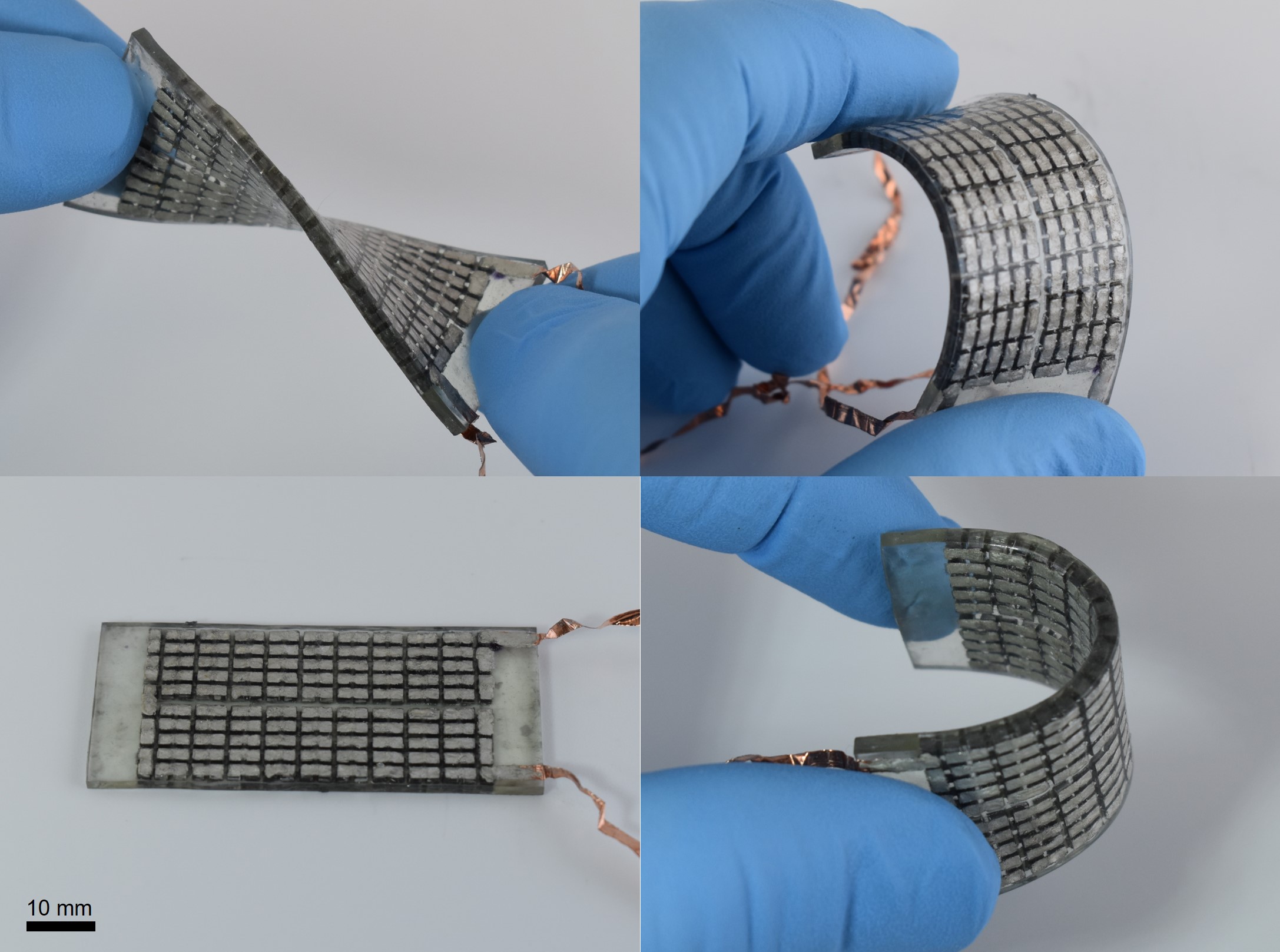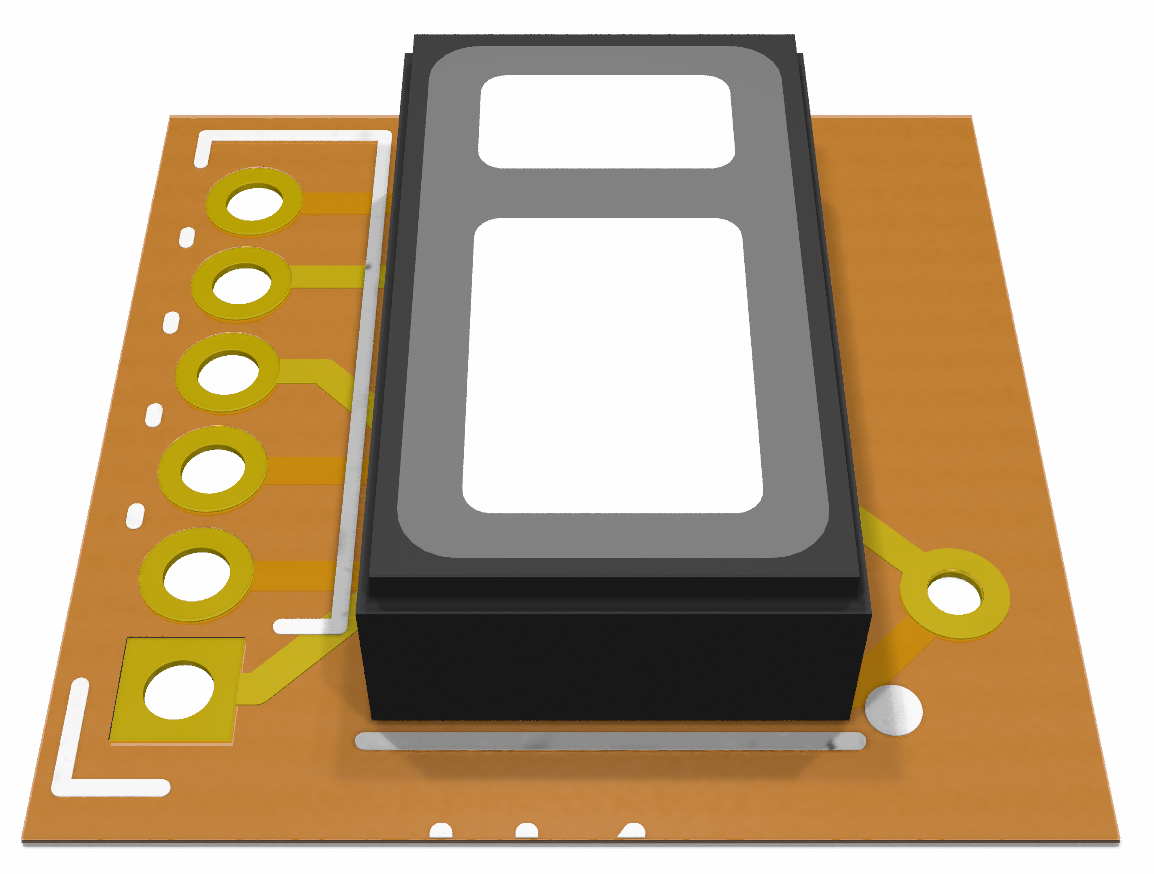TEG-powered, battery-free PPG sensing
Continuous biometric monitoring that doesn’t require frequent device or battery removal for recharging is of great interest to the medical community for improving patient care. In this work, we were very interested in testing how far we can push the boundaries of battery-free technologies, that is, those that fully operate using only energy harvested from their surroundings. Here we implemented a fully body-heat-powered device that periodically captures red and infrared reflectance waveforms and sends this data out over a Bluetooth Low Energy (BLE) link. See some highlights in the gallery below, and please read on. Note that this project is fully released open-source and the paper is open-access. The TEGSense hardware, firmware, and data logger can be found on GitHub. In particular, PPGView might be especially useful to anyone looking for an easy way to configure and stream waveform data from a MAX30101 PPG sensor.
I had the great pleasure of collaborating with Mason Zadan to build a fully human-powered, battery-free, BLE-enabled photoplethysmograph (PPG). Mason has done some really excellent work designing and fabricating soft, flexible thermoelectric devices, which you can read about in his previous work (Zadan et al., 2022) or check out his website for some cool videos. The soft, compliant nature of the flexible TEGs make them better able to conform to the body and transduce heat to electricity. In our more recent work (Zadan et al., 2024), we used his improved devices as thermoelectric generators (TEGs) to fully power a biometric sensor. Figure 1 gives a high-level overview of the study, where a TEG array (a) is connected to a sensor board (b) to continuously recharge a capacitor bank (c) and collect PPG waveform data to send out over BLE (d). Some different views of the thermoelectric device are shown in figure 2, highlighting its flexibily. We capture this data and configure the MAX30101 sensor using the PPGView software, seen in figure 3. Below is a video explaining the study.
Video 1. Supplemental video explaining the TEGSense study (Zadan et al., 2024). See Mason's website.
I designed a sensor board, which we call TEGSense, that steps up the low voltage output from a TEG (or TEG array, in this case) using an ultra low-voltage boost converter to charge a capacitor bank. Once the capacitors are fully charged to about 4.1V, a hysteretic switch enables the microcontroller and PPG sensor power supplies so they may start collecting waveform data to be shipped out over BLE. The hysteretic switch will disable the power supplies if the voltage ever drops below 3.3V to allow full recharging back to 4.1V. Otherwise, after sending a three second waveform, the device sleeps for a period of time while the capacitors recharge. Figure 4 shows a schematic of the electronics.
The board used for collection in the paper is an older revision. Figures 5-7 below show an updated design (the same shown in the schematic in figure 4) meant to be implemented as flexible printed circuit boards (PCBs) and a bit more compact. Further, FFC and other small connectors are replaced with slightly larger contacts compatible with direct ink write (DIW) printed circuits. Future iterations of the TEGSense device can be better integrated into wearables this way.
For a more detailed look, please check out our paper (Zadan et al., 2024) and our work on GitHub.
- Zadan, M., Patel, D. K., Sabelhaus, A. P., Liao, J., Wertz, A., Yao, L., & Majidi, C. (2022). Liquid Crystal Elastomer with Integrated Soft Thermoelectrics for Shape Memory Actuation and Energy Harvesting. Advanced Materials, 2200857. https://doi.org/10.1002/adma.202200857
- Zadan, M., Wertz, A., Shah, D., Patel, D. K., Zu, W., Han, Y., Gelorme, J., Mea, H. J., Yao, L., Malakooti, M. H., Ko, S. H., Kazem, N., & Majidi, C. (2024). Stretchable Thermoelectric Generators for Self-Powered Wearable Health Monitoring. Advanced Functional Materials. https://doi.org/https://doi.org/10.1002/adfm.202404861



, a web-based UI for real-time data streaming and sensor configuration for the MAX30101, designed for use with the [TEGSense](https://github.com/TEGSense) hardware.](/assets/projects/ss_tegsense.jpg)



